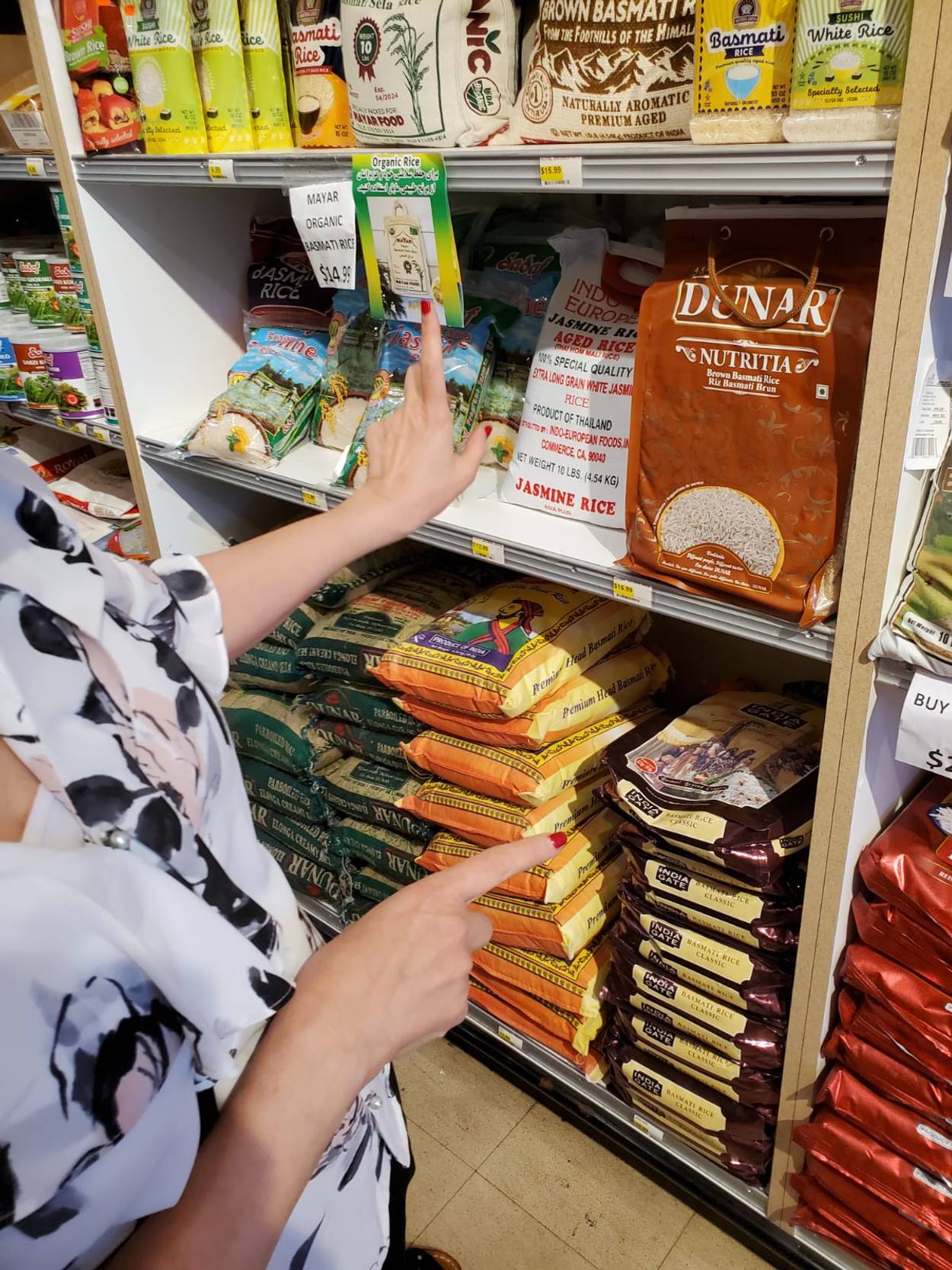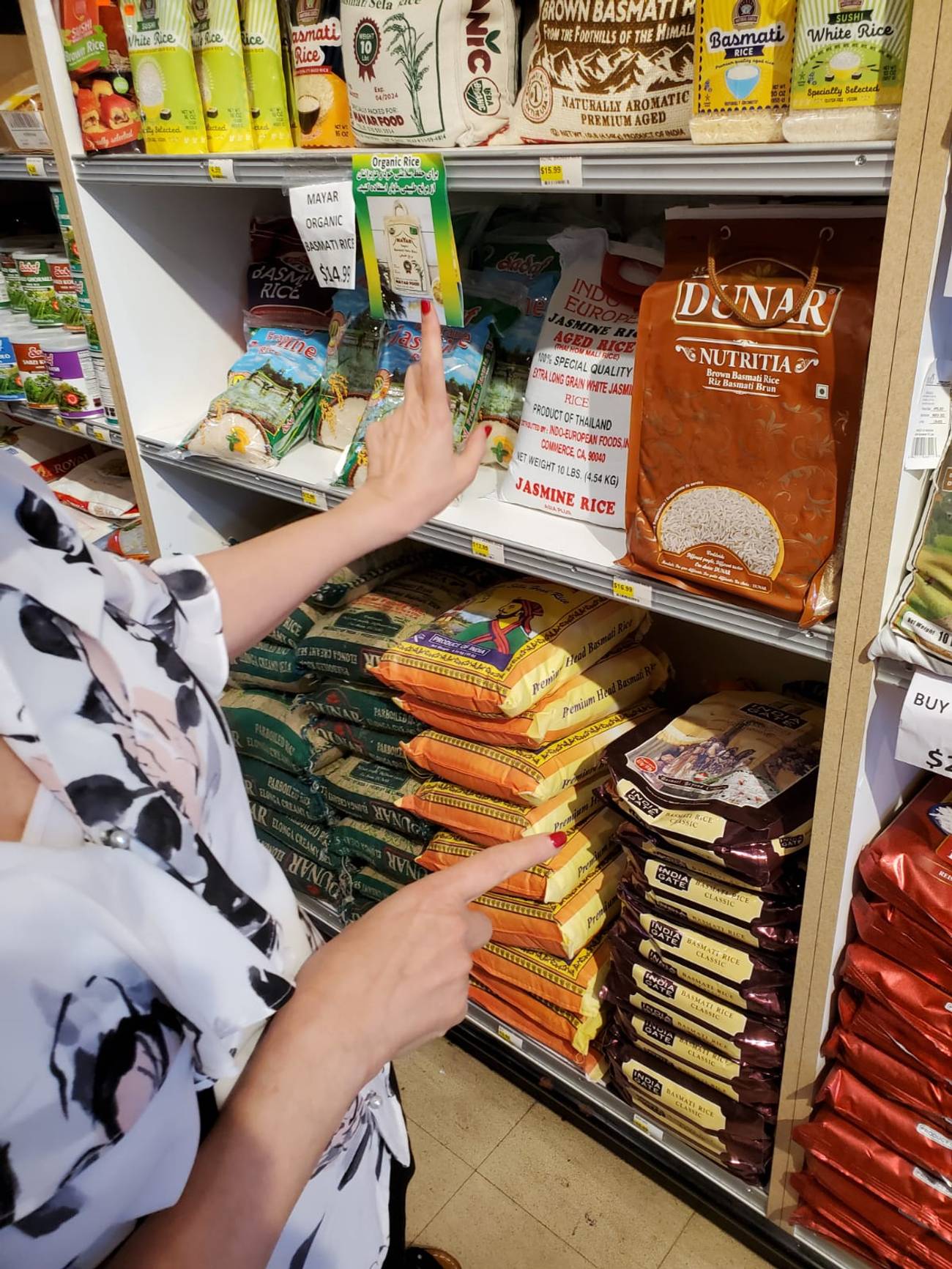A Taste of Persia
The markets of Pico-Robertson bring the flavor of home to LA’s Persian Jewish community—including those who’ve never been to Iran




As Nowruz, the Persian new year celebrated on the vernal equinox, approaches on March 20, the traditions of Los Angeles’ Persian community are very much on display at the Persian Jewish markets of Pico-Robertson. Fleeing persecution, Jews left Iran en masse around the time of the fall of the shah in 1979 and over the years that followed. Large numbers of them—estimates vary wildly from 30,000 to 70,000—moved to LA. The community in LA has held onto its traditions extremely well, with many of the next generation’s members speaking Farsi and making Persian foods at home—with foods they buy at stores that cater to the community’s tastes.
Crowded with excellent produce, very fresh nuts, and people, these markets are the best places to buy necessities for Persian Jewish culinary staples like ferrous ghormeh sabzi (an herbed meat stew), springy baghali polo (dill rice with fava beans), and mellow, alliaceous gondi (meatballs made with chicken and chickpea flour, colored gold with turmeric). The main stores are Glatt Mart (the biggest and most ecumenical-feeling), Elat Market (the oldest and most Persian-feeling), and Pico Glatt (open since the early 1990s, moderately Persian feeling). Together, these markets evoke an Iran I’ve never been to, not to mention an Iran to which their Persian shoppers will never return.
Pico Boulevard, where these markets sit (a few others are scattered around greater LA and the Valley) is not exactly Fifth Avenue, but then Fifth Avenue can’t compete when it comes to torshi, olives, and dates. The Rotab Jumbo dates at Elat are juicy, dense, and taste like dark butterscotch, while the Jumbo Israeli Fresh are spectacular. Along with other local Persian hubs like Eliass Kabob—or Elia’s, depending on which version of the sign you believe (its food is, per its website, “very Special, to steal all your hearts”)—and Le Palais Bakery, with its baklava and faloodeh, these markets preserve for their shoppers something that no longer exists. (Elat, too, sells pillows of baklava, pinched at the top like dumplings.) This makes them somewhat poignant places to shop, if you stop to think about it. But most marketgoers are there to focus on the food, and the food is great: refreshingly sour, copiously herby. For Nowruz, they’re looking for special holiday foods, including smoked whitefish and green rice.
Fariba Rabizadeh explained the uses and meanings of various traditional ingredients to me on a relatively quiet Sunday at Elat Market. She is a licensed marriage and family therapist who left Iran in the chaos of the night before the shah’s fall. She and two siblings joined the other two who were already in America; Rabizadeh would spend one night in New York before traveling to LA, where she has lived ever since. She has raised her family here and cooked a lot of khoresh (stew, the centerpiece of most Persian family meals, of which there are many varieties) in the intervening years. At Elat Market, she stopped and chatted with many acquaintances in Farsi in between giving me the lowdown on different Persian foods.
These markets represent social hubs for Persian Jews in LA, as much as places to shop. Rabizadeh told me that when she first came to the city as a teenager, she placed more of a premium on fitting in. As the years have gone by, though, she has become more invested in Persian culture and education, even writing a book for therapists called How to Treat Iranian Clients.
On this Sunday, Rabizadeh was at Elat Market to educate me. I told her I had seen shoppers spend minutes digging through mounds of cucumbers to find the perfect one, holding specimens up to the light to be sure. What were they looking for? Here is what she told me: Too fat is no good (it means seeds, unsightly in a salad). Soft is no good. What you want in a cucumber is: tall, symmetrical, straight, and a darker green in color. This kind of cucumber is all but guaranteed to be sweet and crunchy. Rabizadeh was generous with insider knowledge, which I will share here with her permission: Pomegranates should be round, unblemished, and flat-topped (glossy, unblemished fruit is favored as in Persian culture, as it is often put on display). When shopping for pickled garlic, look for the darker, more heavily fermented variety. Good tomato paste is a staple of Persian stews. Tap a watermelon with your knuckles for a nice, hollow sound. A good eggplant is dark, hard, and straight; don’t waste your time with the soft ones. As for rice, Rabizadeh told me real Persian home cooks favor white, long, basmati. Aahu Barah was her tip for one of the finest brands; apologies to the dozens of others on sale there, all in evocatively printed sacks. Tarragon, basil, mint, crispy red radishes, and green onions are traditionally set out to make a plate to take bites of between mouthfuls of heartier stews, so they’d better be fresh. To these you add fenugreek leaves and dried lime, for the distinctive flavor of ghormeh sabzi.
I spotted frankincense among the Sadaf and Golchin brand spice packets on the wall display and asked Rabizadeh what it was traditionally used for. She found a packet of wild rue (esphand) also on the wall and told me that Persians burn the two of them together to smoke out the evil eye and clear the air. (Wild rue is also popular with Ashkenazim, but it’s a different variety.) Otherwise, golpar is good seasoning for fava beans, sumac is for cholo kabab (and nearly everything else), and purple borage flowers can be made into a tea to calm the nerves. When you’re sick, there are sweet lemons or nabat, a hard candy sometimes flavored with saffron to soothe your stomach.
The nuts at Elat Market are exceptional. I met shoppers who came from downtown just for the lemon almonds. I’m also personally indebted: Bringing Elat’s roasted hazelnuts to my girlfriend played a decisive role in our courtship. Jack, the man behind the nut counter at Elat Market, is brisk, helpful, and to the point. I knew I had made it in his eyes when he told off a Persian woman in Farsi for cutting in line ahead of me, although we’re not quite at the point where he acknowledges me when I pass him in the street.
Glatt Mart may be the 600-pound gorilla, the largest and most mainstream of the markets. It tends to smell more like bleach and meat juices than Whole Foods does, but it also has delicacies Whole Foods lacks, like rows of lamb tongues on Styrofoam trays. Elat Market sells reliably fresh fish, the counter managed by a kind-eyed man who promises to “look after you.” Elat does a brisk trade in salmon heads. I asked a woman next to me what she was planning to do with them, and she said, simply, “chop them and grill them.” Glatt Mart has a dedicated onion and potato room, which may account for its market leader status—it’s hard to beat an onion and potato room. But Elat Market, right next door, is not one to be cowed. Elat Market knows it’s got the halva and the kashke bademjan (a side dish made with eggplant and kashk, a sour yogurt) to hold its own. I like its underdog spirit, not to mention its flair, its posters trumpeting coming Persian musical acts like Shahram. Against Glatt Mart’s potato room, Elat Market has what I can only describe as a walk-in bread closet. If there’s a better place to buy one of the three major Persian breads—barbari, sangak, or lavash—in LA, I don’t know it.
Walking with Rabizadeh through Elat Market, it became almost impossible to find a section that was not resonant with meaning for her, or Persian culture as a whole. She paused at some rose water syrup. When someone dies, she told me, mourners at the cemetery pour rose water on their loved one’s grave and say a blessing on it; Persian kohanim also use rose water to wash their hands before making the blessing.
Rebecca Rabizadeh, Fariba’s daughter and a licensed clinical social worker, remembers accompanying her mother to these markets as a child and being bumped into by other shoppers and their carts. She prefers to shop at Trader Joe’s these days. It is, in her words, a vacation from the community. Eli Shavalian, a college counselor at Shalhevet high school, also tends to shop at Trader Joe’s, but will be going to Elat Market to buy Nowruz supplies for his Haft-Sin, a display Persians put out for Nowruz that features seven components, all starting with the letter sin. These constituents, like purple hyacinth and sabzi (green sprouts in a circular dish), symbolize renewal. (Shavalian also makes stops at Elat Market to bring his grandmother gaz, a nougat that originated in Isfahan.) His childhood memories of going to Elat with his parents involve guarding their cart against other shoppers who might enjoy the convenience of someone else’s preselected items. This rang true: Elat is the only place I’ve ever shopped where someone has reached into my basket to admire a jar of something I’d picked up. Now that she can better negotiate the aisles, Rebecca has come to appreciate the beauty and uniqueness of Elat Market’s offerings. Shavalian is making a conscious effort to learn more Persian recipes, though most Persian foods are designed to be cooked in quantities. It’s a lot of work to make a khoresh for one.
The last word about these markets must be on their shopping carts, which are unimprovable. The carts have none of the wheel-locking nonsense of a larger chain’s. You just take your shopping cart, push your groceries home, unload your groceries, then leave the shopping cart pretty much anywhere. In the street, in your yard—truly, anywhere. Don’t give it a second thought. A man in a pickup truck who works for both Glatt and Elat Markets cruises the neighborhood for them and takes them back. I’ve seen at least one shopping cart with another store’s brand in the aisles of Glatt Mart, so it’s possible that he can be overzealous. But then exile, dislocation, and the promise of a new home that feels something (but not exactly like) the old one are precisely what these markets are about.
Emil Stern is an Australian screenwriter living in Los Angeles. He is working on a book about his family, Displaced Persons.